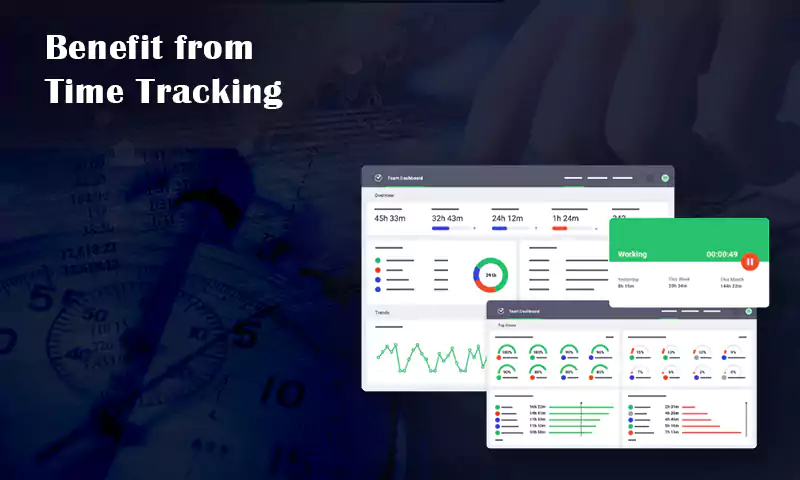Understanding the Different Types of Low Code Platforms
In recent years, low-code platforms have emerged as a revolutionary way to build applications faster and more efficiently. These platforms allow developers to create applications using visual interfaces and pre-built templates instead of writing code from scratch. This approach enables faster development and deployment of software applications, significantly reducing the time and cost involved in traditional development processes. A Low Code Application Development Platform caters to different needs and requirements. This blog will explore the different types of low-code platforms and their benefits.
General-purpose Low-code Platforms
General-purpose low-code platforms are designed to create various applications across various industries and use cases. These platforms provide a wide range of pre-built templates, components, and tools that can be used to develop web and mobile applications, business process automation, customer relationship management (CRM), and more. General-purpose platforms typically provide extensive customization options, allowing developers to create unique and complex applications tailored to their needs.
Benefits of General-purpose Low-code Platforms:
Multiple Use Cases:
General-purpose low-code platforms are designed to provide a wide range of features and functionalities, making them suitable for multiple use cases. They offer a variety of pre-built components and templates that can be easily customized to fit specific business requirements. This versatility allows organizations to use the same platform for different projects and purposes, reducing the need for multiple platforms and saving time and money.
Flexibility:
Low-code platforms are designed to be flexible and adaptable, making them suitable for building applications for various industries and departments. Developers can quickly build and deploy applications for multiple devices and platforms with a low-code platform. This flexibility allows organizations to respond quickly to changing business needs and stay ahead of the competition.
Extensive Customization Options:
General-purpose low-code platforms provide extensive customization options, allowing developers to build unique and complex applications. With a low-code platform, developers can easily customize the look and feel of their applications, as well as add new functionality and features. This enables organizations to create custom applications that meet business requirements without building them from scratch.
Faster Time-to-Market:
With low-code platforms, developers can build and deploy applications much faster than with traditional development methods. Low-code platforms offer pre-built components and templates that can be quickly customized and integrated into applications. This means that developers can focus on building the application’s core functionality rather than spending time on repetitive coding tasks.
Industry-specific Low-code Platforms
Industry-specific low-code platforms cater to specific industries like healthcare, finance, retail, and manufacturing. These platforms provide pre-built templates, components, and tools specific to a particular industry, making it easier for developers to create applications that meet industry-specific needs and regulations. For example, a healthcare-specific low-code platform may include pre-built components for electronic medical records (EMR) and HIPAA compliance.
Benefits of Industry-Specific Low-code Platforms:
Specialized Templates and Components:
Industry-specific low-code platforms offer pre-built templates and components tailored to a particular industry’s needs. This means that developers can quickly build applications specific to the industry without starting from scratch. These templates and components are designed to meet the unique needs and challenges of the industry, making it easier for developers to create applications that meet industry-specific requirements.
Compliance and Regulation:
Industry-specific low-code platforms are designed to comply with industry regulations and standards, reducing the risk of compliance violations. These platforms are designed to meet a particular industry’s specific compliance and regulatory requirements, such as HIPAA for healthcare or PCI DSS for finance. This means that developers can build applications that meet the necessary compliance requirements, reducing the risk of fines or other penalties.
Faster Time-to-Market:
Industry-specific low-code platforms offer pre-built components and templates, which can significantly reduce the time it takes to build and deploy industry-specific applications. Developers can quickly customize these pre-built components and templates to meet the industry’s specific needs, reducing the time and resources required to build custom applications. This means that industry-specific applications can be brought to market faster, giving organizations a competitive edge.
Workflow Automation Low Code Platforms
Workflow automation is a Low Code Application Development Platform designed to automate business processes and workflows. These platforms provide pre-built templates, components, and tools that enable developers to automate repetitive and manual tasks, reducing the need for human intervention. Workflow automation platforms typically include drag-and-drop interfaces, visual process mapping, and integration with other enterprise applications.
Benefits of Workflow Automation Low Code Platforms:
Increased Efficiency and Productivity:
Workflow automation low code platforms provide a visual drag-and-drop interface that eliminates manual coding. This reduces the time and effort required to develop workflows and automates repetitive tasks, allowing teams to focus on more important tasks. By automating processes, workflows can be completed faster, increasing the organization’s productivity and efficiency.
Pre-built Templates and Components:
Low-code platforms provide pre-built templates and components that can be easily customized to meet specific business needs. This reduces the need for custom development, which can be time-consuming and costly. By leveraging pre-built templates and components, businesses can accelerate development and deliver workflows faster.
Integration with Other Enterprise Applications:
Workflow automation low code platforms integrate with other enterprise applications, such as CRMs, ERPs, and other line-of-business systems. This enables businesses to create a complete end-to-end solution that integrates seamlessly with other applications, eliminating the need for manual data entry and reducing errors. Businesses can improve data accuracy and streamline processes by integrating workflows with other enterprise applications.
Improved Collaboration:
Workflow automation low code platforms allow teams to collaborate more effectively. With a visual interface and pre-built components, it becomes easier for team members to share their work, make changes, and iterate on workflows. This improves collaboration and communication between team members and reduces the likelihood of errors or misunderstandings.
Integration Low Code Platforms
Integration low code platforms are designed to integrate multiple enterprise applications and systems. These platforms provide pre-built connectors, APIs, and tools enabling developers to connect and integrate disparate systems quickly. Integration platforms typically include features such as data mapping, transformation, and synchronization.
Benefits of Integration Low Code Platforms:
Faster Integration of Multiple Systems:
Low code platforms for workflow automation enable faster integration of multiple systems by providing a visual interface for connecting systems. This eliminates the need for manual data entry and reduces the risk of errors. By automating the transfer of data between systems, businesses can streamline their processes and reduce the time and effort required to manage data across multiple systems.
Pre-built Connectors and APIs:
Workflow automation low code platforms provide pre-built connectors and APIs for integrating with popular enterprise applications, such as Salesforce, Oracle, and SAP. These connectors and APIs eliminate the need for custom development, reducing the time and effort required to integrate systems. By leveraging pre-built connectors and APIs, businesses can accelerate development and deliver integrations faster.
Real-time Data Synchronization:
Low code platforms for workflow automation enable real-time data synchronization between systems. This ensures that data is accurate and up-to-date across all systems, reducing the risk of errors and providing a complete picture of business operations. By synchronizing data in real-time, businesses can make better decisions and respond more quickly to changing business needs.
Reduced Risk of Errors:
Workflow automation low code platforms reduce the risk of errors by automating data transfer between systems. This eliminates the need for manual data entry, which can be time-consuming and error-prone. By automating data transfer, businesses can reduce the likelihood of errors, which can save time and prevent costly mistakes.
In conclusion, low-code platforms have revolutionized the way software applications are built, making them faster and more efficient. The different types of low-code platforms cater to specific needs and requirements, providing pre-built templates, components, and tools that enable faster development and deployment of software applications. Whether you’re a developer, a business user, or an enterprise IT department, low-code platforms can help you achieve your goals faster and more efficiently.
Share
















